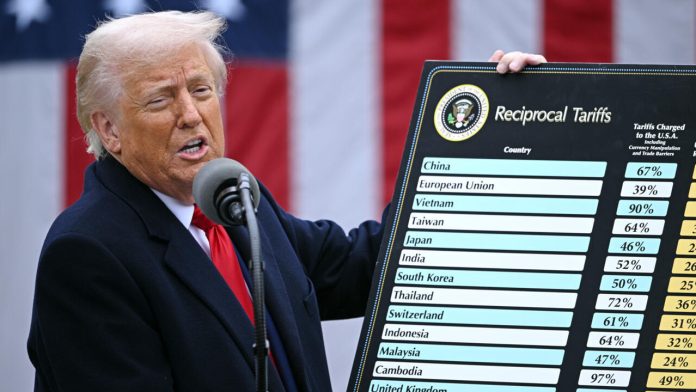Facebook Twitter (X) Instagram Somali Magazine - People's Magazine
A federal appeals court has temporarily allowed former President Donald Trump’s tariffs to stay in place, just one day after a lower trade court ruled that the president had overstepped his authority in imposing them.
The United States Court of Appeals for the Federal Circuit, based in Washington, issued the temporary order on Thursday but did not provide any explanation for its decision. The court has given the plaintiffs—those opposing the tariffs—until June 5 to respond.
The Trump administration had urgently requested the reinstatement, arguing that removing the tariffs would harm national security. The White House welcomed the court’s decision, and Trump trade adviser Peter Navarro said that even if they lost future legal battles, they would find other ways to keep tariffs in place.
Possible New Tariffs Under Review
According to The Wall Street Journal, the White House is considering a new plan to impose 15% tariffs for 150 days on trading partners by using a little-known rule from the 1974 Trade Act. This would give the government time to create more targeted tariff policies using another part of the law that deals with unfair trade practices. Though the legal process is complex, it could make future tariffs more defensible in court. Discussions are still ongoing inside the White House.
Why the Lower Court Blocked the Tariffs
On Wednesday, the US Court of International Trade ruled that the tariffs violated the law because they were based on the International Emergency Economic Powers Act (IEEPA)—a law designed to handle national emergencies, not trade policy. The court said this was an overreach of presidential power.
The IEEPA, passed in 1977, is typically used to impose sanctions or take action against specific threats, like terrorist groups or foreign governments, not for raising tariffs. For example, the US has used the law in the past to freeze assets during the Iran hostage crisis and to target drug cartels.
Legal experts say the law doesn’t mention tariffs at all. Bruce Fein, a former associate deputy attorney general under President Reagan, explained that there is a more appropriate law—the Trade Expansion Act of 1962—which allows the president to set tariffs, but only after the Commerce Department conducts a study and finds a product-specific threat to national security. Tariffs under that law must be applied one product at a time, not against entire countries.
Fein added that if the president wants broader powers, he would need to ask Congress to change the law.
Impact and Outlook
Although the appeals court has temporarily allowed the tariffs to stay, the earlier decision is still seen as a setback for Trump’s trade policies. These tariffs were a major part of his economic agenda and have been blamed by some experts for weakening consumer confidence and contributing to the US losing its top credit rating.
If the trade court’s ruling is eventually upheld, importers might be able to get refunds for the tariffs they’ve already paid under the IEEPA. However, the government is likely to delay any refunds until all appeals are completed.
Greg Schaffer, a professor at Georgetown Law School, emphasized that only Congress has the power to decide tariff levels. He noted that the IEEPA was actually intended to limit presidential power, not expand it.
Meanwhile, the trade court’s ruling doesn’t affect tariffs that were imposed using other laws, like the 1962 Trade Expansion Act, which is how Trump justified tariffs on steel, aluminum, and cars. The administration is also exploring tariffs on specific items like pharmaceuticals from China. The Department of Commerce is currently investigating whether relying on Chinese ingredients for key medications poses a national security risk.
Fein concluded by saying that the issue is not whether the president can impose tariffs at all—he can, under the right legal framework—but that the process must follow the rules, including product-specific studies and justifications.

